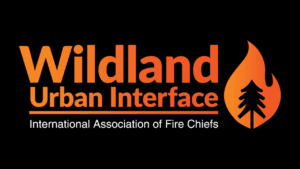Wildland Urban Interface
View article.
Wildland–urban interfaces (WUIs), the juxtaposition of highly and minimally developed lands, are an increasingly prominent feature on Earth. WUIs are hotspots of environmental and ecological change that are often priority areas for planning and management. A better understanding of WUI dynamics and their role in the coupling between cities and surrounding wildlands is needed to reduce the risk of environmental hazards, ensure the continued provisioning of ecosystem services, and conserve threatened biodiversity. To fill this need, we propose an expanded framework for WUIs that not only conceptualizes these interfaces as emergent and functional components of socioecological processes but also extends them vertically from the bedrock to the top of the vegetation and horizontally across heterogeneous landscapes. This framework encourages management that reconciles pervasive trade-offs between development and resulting multiple environmental impacts. Focusing on southern California as a case study, we use the framework to facilitate integration across disciplines and between scientists and managers.
View article.
In this study we illustrate the value of social data compiled at the community scale to guide a local wildfire mitigation and education effort. The four contiguous fire-prone study communities in North Central Washington, US, fall within the same jurisdictional fire service boundary and within one US census block group. Across the four communities, similar attitudes toward wildfire were observed. However, significant differences were found on the measures critical to tailoring wildfire preparation and mitigation programs to the local context such as risk mitigation behaviors, reported barriers to mitigation, and communication preferences across the four communities.
View article.
In general, we find that treating near housing units can provide the greatest level of protection relative to treating more remote wildlands to reduce transmission potential. Treating on federal lands to reduce federal transmission was highly effective at reducing exposure from federal fires and at expanding opportunities for beneficial fire but contributed comparatively little to reducing housing exposure from all fires. We find that treatment extents as low as 2.5–5% can yield significant benefits with spatially optimized strategies, whereas the random strategy did not perform comparably until reaching a much larger treatment extent. Increasing risk tolerance for housing exposure expanded the area suitable for managed fire, while decreasing risk tolerance for beneficial fire opportunity and flame length probability shrunk the area suitable for managed fire.
Access Firetopia.
Land use planning tool from Headwaters Economics. Includes information on:
- Community planning
- Land development
- Building and fire codes
- Fuels treatment
- Funding and engagement
Webinar recording.
This webinar features insights and lessons from three communities in Colorado —the City of Colorado Springs, Eagle County, and Ouray County— and their successful approaches to local adoption and enforcement of wildfire regulations. This webinar is based on a new report from the Community Wildfire Planning Center, Regulating the Wildland-Urban Interface in Colorado.
View article.
After they have been delineated, PODs are essentially big boxes on the landscape that illustrate where fire could potentially be contained. Collaborators can then use CWPPs and other planning processes to fill those boxes with a wide variety of local and statewide spatial data about expected fire behavior, homes, infrastructure, and other values at risk to inform where resources should be expended to protect community values. Because PODs delineate where fires are likely to be contained, they can help operationalize CWPPs. Like CWPPs, PODs institutionalize knowledge and can be used to create a variety of maps and spatial data products. However, the real value of PODs and CWPPs comes from the collaborative processes used to create them, the interagency coordination and conversations they facilitate, and their power as communication tools between communities, land management agencies, and other stakeholders. By incorporating the PODs framework into a new or updated CWPP, a community is able to incorporate the latest science and use an operationally based planning framework that is broadly adopted and supported by federal agencies.
View article.
Historical wildfire ignition locations and NOAA’s hourly time series of surface weather at 2.5 km resolution are used to drive ELMFIRE to produce wildfire hazards representative of the 2022 and 2052 conditions at 30 m resolution, with the future weather conditions scaled to the IPCC CMIP5 RCP4.5 model ensemble predictions. Winds and vegetation were held constant between the 2022 and 2052 simulations, and climate change’s impacts on the future fuel conditions are the main contributors to the changes observed in the 2052 results. Non-zero wildfire exposure is estimated for 71.8 million out of 140 million properties across CONUS. Climate change impacts add another 11% properties to this non-zero exposure class over the next 30 years, with much of this change observed in the forested areas east of the Mississippi River. “Major” aggregate wildfire exposure of greater than 6% over the 30-year analysis period from 2022 to 2052 is estimated for 10.2 million properties. The FSF-WFM represents a notable contribution to the ability to produce property-specific, climate-adjusted wildfire risk assessments in the US.
Webinar recording.
Join FAC Net and Travis Paveglio as they present the new Fire Adapted Communities Pathways Tool. The Fire Adapted Communities Pathways Tool helps users identify a range of fire adaptation practices and resources that research and experience indicate are more likely to work in the places they live.
Learn more about the tool (or download it in advance of the presentation) here: https://fireadaptednetwork.org/resources/fac-pathways-tool/
Conference website.
View report.
In developing this report, a cross-functional group of stakeholders and subject matter experts (SMEs) from across the nation convened to identify 33 challenges within 13 key WUI issues and develop recommendations to address each challenge. In total, 112 recommendations are presented. These recommendations address challenges in firefighter health and safety, public health and safety, evacuations, forest and rangeland health and resiliency, climate change, community planning and resiliency, infrastructure and utilities, communication strategy and engagement operations, socioeconomic impacts, recovery, emerging technology, data use and modeling, and risk management in wildland fire. The recommendations should be pursued together, forming a system of strategies that require urgent, sustained and actionable implementations. These recommendations are not quick fixes, but solutions for the long term. Leadership on and commitment to the implementation of these recommendations results in a safer America.






